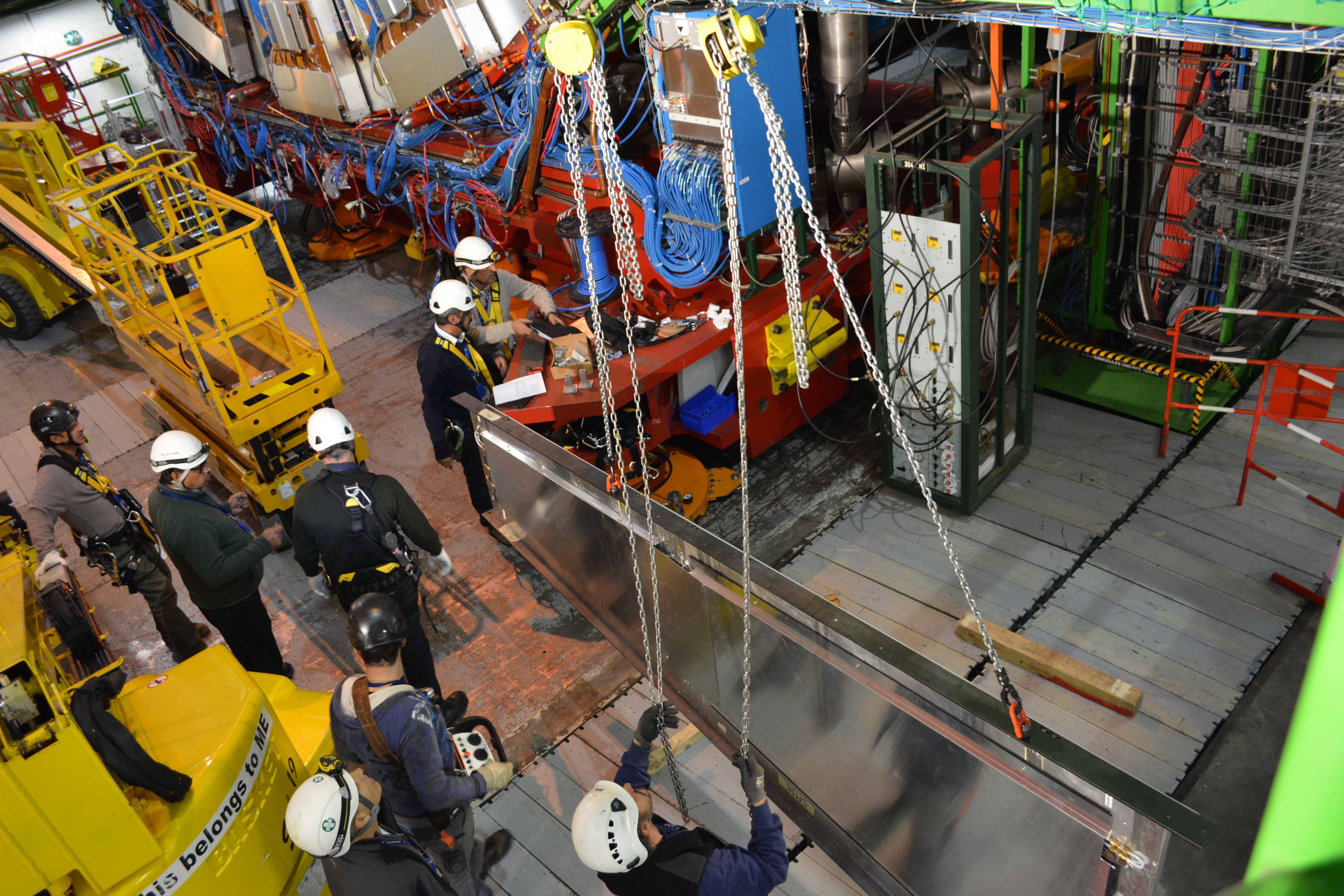
Two new wheels of the Resistive Plate Chambers (RPCs) of the muon system are being installed during the LHC’s first Long Shutdown (LS1). These will add to the six lateral wheels in the (outer) endcaps, which currently make up the RPC system with six layers in the (central) barrel. This RE4 project consists of 72 Super Modules (SM), each made with two RPCs, for a total of 144 double-gap RPCs. These are produced and tested in South Korea, India, Belgium and at CERN. A trial installation of the positive RE4 was performed during 11–13 November, and three SMs were successfully mounted and dismounted by a Pakistani/Italian/Mexican/Belgian/CERN team. Being multilingual is very useful in such situations. The team arrived at the CMS experimental site in Cessy, France early in the morning and waited until after lunch for the green light to start the first intervention. The two-tonne trolley with six SMs was underground and ready a few days before. The trial installation was performed in the near side (the side closer to the centre of the LHC ring), and the first unexpected challenge was the orientation of the SM in the trolley. We learned that we gain some time if they are properly oriented in the trolley coming from Building 904 at CERN’s Prevessin site. The second challenge was lifting the SM. One SM weights about 230 kg, and CERN has strict safety guidelines that must be followed when lifting such a heavy object to 10 meters. Therefore, together with the crane team we revised the reliability of the designed lifting points on the side bands of the SM. The RE4 was initially designed taking into account the space needed for the Cathode Strip Chambers (CSCs) and Alignment system. With the removal of the Alignment system, this space is not needed anymore, so we have the option to place the RE4 closer to the CSCs. Good bookkeeping of every detail is very important in these cases, to help the decision-making process. Everybody is focused on setting up or doing their part of the job, and so paying attention to each minute of the process is important. At the end of the day, important protocols on SM orientation, storage space allocation at the experimental site, SM lifting, workforce, logistics and teamwork were established during this exercise. We confirmed that the installation of six SMs per day is feasible with a six-person team, two members of which focus on driving cherry pickers. The installation of the RE4 positive endcap (located away from the main shaft) is scheduled for December 2013 and the tools, procedure, and manpower workforce needs are set. We still have 36 SMs to go for the RE4 negative endcap (on the side of the main shaft). The production of the 216 gaps needed to build the 72 chambers is ongoing in South Korea, and the chamber production and testing is in progress in India, Belgium and at CERN. Several gap shipments are foreseen in November, December and January. The first batch of SMs is expected to be delivered at the end of February by a Belgian/Bulgarian/Georgian/Mexican team. The installation of the negative side is foreseen in April 2014, with some extra time available in August 2014.
- Log in to post comments

